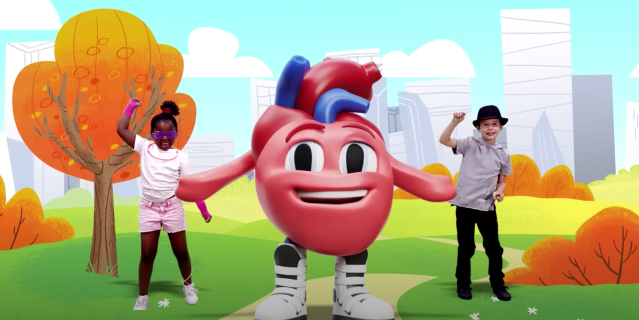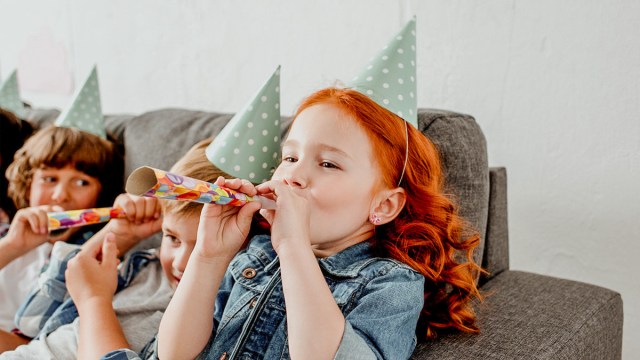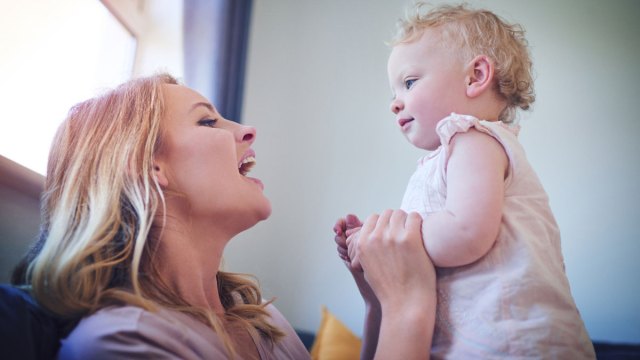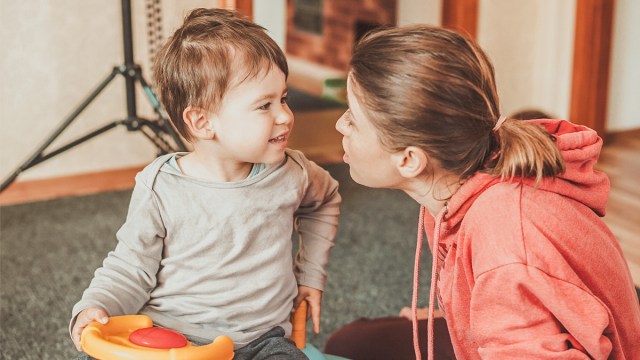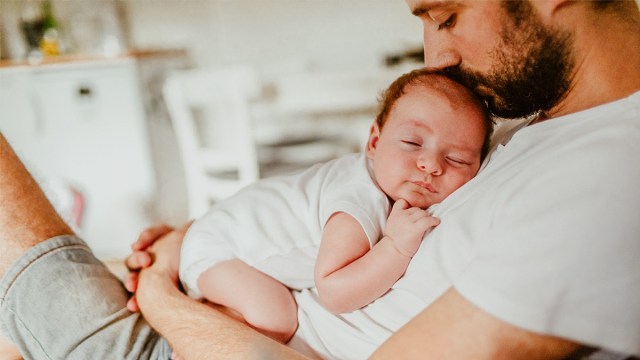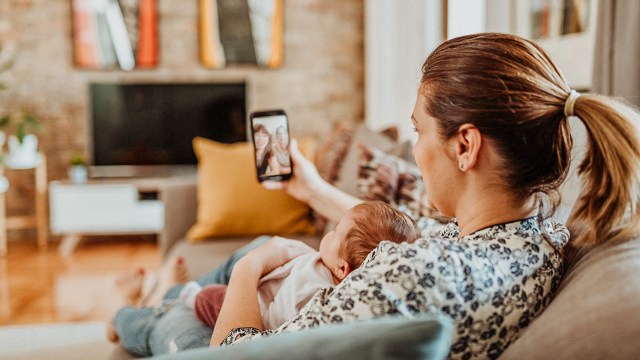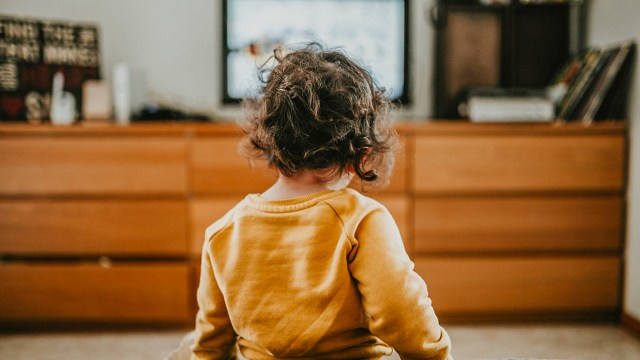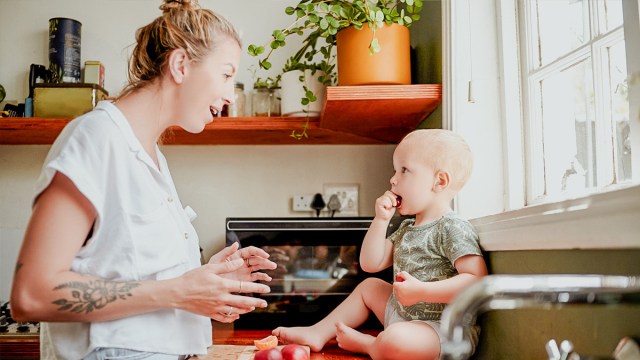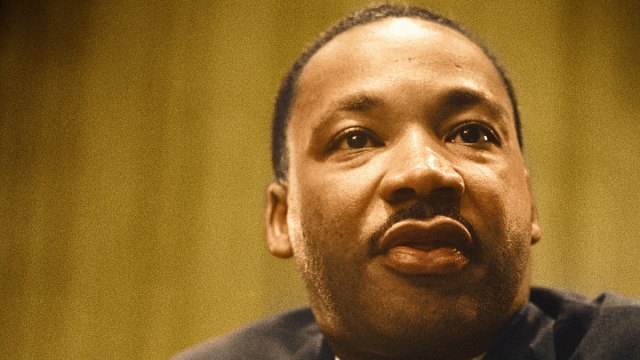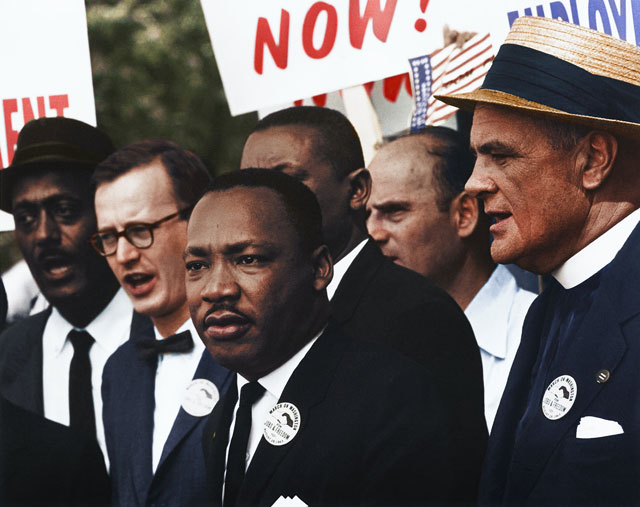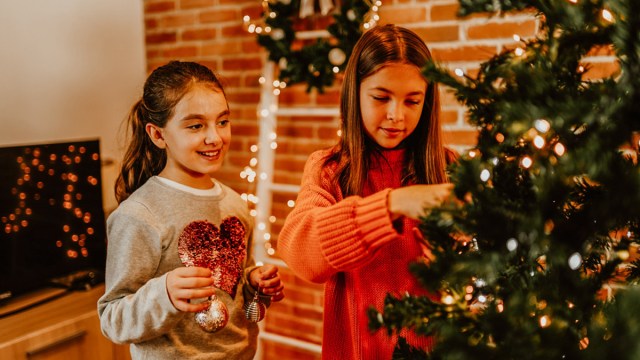While research indicates that infants and toddlers under 18 months shouldn’t have any screen time, for most parents, especially working parents, that isn’t a reality. Our advice? Ditch the parenting guilt and focus on quality when it comes to screen time. Our list of the best YouTube channels for toddlers highlights those that engage and entertain with fun and educational content (zero unboxing to be found). These channels challenge little minds and also encourage moving little bodies, so, when you do need to utilize a screen, here’s what your toddler should be watching.
The Snack Town All-Stars
Join in on the fun with Banana, Apple, Orange, and, Grape. These animated healthy snacks sing fun songs about eating good foods and there are even soothing lullabies for naptime. One of the most popular videos is Stay Healthy Shake, which encourages kids to get up and move. We love this for the times when you need a quick 15 minutes.
Blippi
With his orange glasses, suspenders, and bowtie, Blippi has taken the toddler world by storm. His educational content teaches young kids about everything from colors to numbers. Blippi’s whimsical and exaggerated mannerisms and the simple-to-follow lessons are brought to life with age-appropriate props and backgrounds. This not only appeals to toddlers but also keeps them engaged and entertained while they are learning.
PBS Kids
With live streams of many PBS kid shows like SUPER WHY, Daniel Tiger, and Rosie’s Rules, the PBS Kids YouTube channel offers educational and engaging content for toddlers. There are also full episodes of the newer PBS show Work It Out Wombats, which focuses on computational thinking. The show focuses on three main characters who also happen to be wombat siblings navigating an apartment complex and solving problems along the way.
Sesame Street
This YouTube channel features episodes from the long-running, award-winning children’s show. The compilations and themed content around important holidays and events are not only educational but interactive, too. Toddlers will love seeing all their favorite Sesame Street characters from Elmo to Grover sing and dance. With over 23 million subscribers, the YouTube channel is as popular as the show many parents grew up with and are now eager to share with their own children.
Related: Movies for Toddlers That Aren’t Too Scary (and Will Hold Their Attention)
Gabby & Friends
After revealing a surprise, real-life girl Gabby grabs her stuffed cat and says a few magical words. She then becomes a tiny animated figure who goes on adventures in her amazing dollhouse. Kids can watch full episodes of the Netflix show, Gabby’s Dollhouse, on the YouTube channel. They can also enjoy videos of simple crafts, songs, and educational content like learning the colors of the rainbow. Parents can enjoy some special bonding time with their toddlers during the crafting videos because young kids won’t be able to do these by themselves.
Ms. Rachel Songs for Littles
With over two million subscribers, Ms. Rachel’s soothing and melodious voice provides toddlers with lessons on letters, sounds, and numbers. The preschool teacher was inspired to create her channel after her own son was diagnosed with a speech delay. With a special focus on language development, Miss Rachel focuses on providing kids with an interactive experience they can follow along with. Her puppet sidekicks Herbie and Georgie also grab kids’ attention.
Danny Go!
According to the website, this YouTube channel is geared toward kids from 2-7. With catchy and fun songs like The Dinosaur Dance and Fire and Ice Freeze Dance, Danny Go! encourages kids to get moving by showing them simple dance moves they can easily do. There are a cast of regular characters like Mindy Mango, Tiny Danny, and scientist Pap Pap who provide movement breaks and educational lessons against colorful and engaging backgrounds.
Related: 40 of the Very Best Books for Toddlers
Super Simple Songs
This YouTube channel with more than 37 million subscribers appeals to toddlers with its simple and classic songs. Many videos feature old-school puppets or animated characters that will entertain and engage kids who will love singing and dancing along. From classic nursery rhymes like Humpty Dumpty to age-old songs like Skidamarink, this channel will keep your toddler on their toes.
CoComelon
With musical repetition and bright colors, this channel is perfect for toddlers. The repetition helps them to build their vocabulary and acquire early literacy skills with the use of nursery rhymes and songs. CoComelon also teaches toddlers about colors and numbers, and provides other important life lessons.
The Learning Station
This channel is fun and educational, focusing on everything from early literacy development to social and emotional learning. One of the most popular songs, Herman the Worm, has racked up 117 million views. Kids love the simple melody and silliness factor of the goofy song.
Related: 41 Giggle-Inducing Jokes for Toddlers
Storyline Online
This literacy program features some of the most popular and entertaining celebrities reading kids’ books. Presented by the SAG-AFTRA foundation, kids will love the lively reading where celebs do a variety of voices and get truly animated. Parents may want to watch alongside their kids to see celebrities from Oprah to Jennifer Garner. In one particularly enticing entry, the late, great Betty White reads Harry the Dirty Dog.
